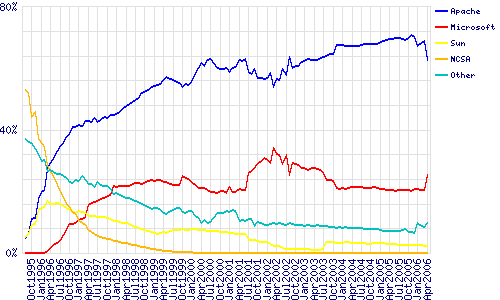Free/OpenSource Software Model
FLOSS
FREE/OPEN-SOURCE MODEL SUCCESS
|
Stallman and the Free Software Foundation's plan appeared, at the beginning, as one of the many, beautiful, utopian ideas describing a "different likely world" but without any possibility of it becoming reality.
Of course, small communities of idealists can potentially produce and exchange free software, but such software will never be fully able to compete with the ones developed by enterprises within well-organized, centralized, financially supported projects. University scholars and people keen on technology can also enjoy themselves with hobby software, but who can readily believe that cooperating individuals would be able to produce software that is more reliable than the one developed by giant enterprises such as Microsoft? That an open source code can actually allow the bugs to be fixed though voluntary work? That this anarchic way of working can eventually produce reliable software?
But this story is r!
The figure opposite (from http://news.netcraft.com/archives/web_server_survey.html, 14-4-2006) shows the evolution of the server web market. At that time, December 2005, the Opensource Apache server - which runs on GNU-Linux [ROSSZ LINK], Windows or Mac OSX - represented 69,97% of the market! Microsoft servers came in second at 20,92%!
A server must be reliable. The fact that this is exactly the field in which free software has proved most successful, reopens the debate on what was once taken for granted.
|
Market share of Internet Servers
|
|
GNU/LINUX
Linux is the most famous Open Source software. Linux is often spoken about as an Operating System, but this is incorrect: it is only the kernel, the core of the operating system.
In 1983 Stallman promoted the project GNU - Gnu is Not Unix - to produce a free operating system of the Unix type. In 1991 the GNU project had developed many relevant components of the operating system, but the kernel, the basic nucleus, remained unfinished. It has since been produced through the efforts of a Finnish student, Linus Torvalds, who, in mixing his own name with Unix, called it Linux.
The Linux kernel was issued under a GNU GPL licence. It is this very licence, of the copyleft type, which has enabled hundreds of programmers, from all over the world, to contribute to the development and improvement of a product, created for fun, or rather for individual study, which has become the heart of an operating system that is nowadays widely used all over the world.


